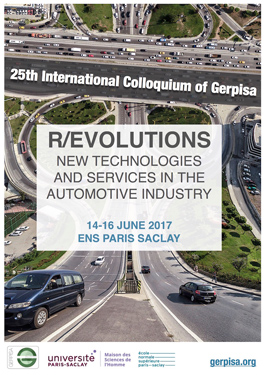New technologies and services in the automotive industry

Never before has the automotive industry has been involved in so many revolutions at once: the EV revolution, the digital and autonomous car revolution, the new mobility revolution, the industry 4.0 revolution.
Forecasts from authoritative agencies announce that in the very near future the car as we have come to know it until the beginning of the XXI century – privately acquired and owned, personally driven, propelled by an internal combustion engine and manufactured by human beings – will cease to exist, replaced by electric, autonomous, connected mobility services produced in highly automated and flexible factories.
Carmakers and automotive traditional suppliers do not contest these views: they rather portray themselves as the future providers of these new services and technologies. Several reports suggest that if they don’t (or even if they do), other actors, ranging from GAFA (Google, Apple, Facebook, Amazon) to others ICT (Information and Communication Technology) and “social network” firms and start-ups, will take the control of this new digital value chain.
Yet, if one looks at the 91 millions of cars produced worldwide in 2015, an all time record, it is hard to see many traces of these on-going and upcoming revolutions. Indeed, never before in the history of mankind were so many conventional, ICE propelled and privately owned and driven cars produced by the traditional players of the automotive industry.
The problem with disruptive innovations is that they are supposed to start small, before becoming dominant. But how to know in advance if we are dealing with true radical changes or passing fashions?
How to properly characterise their dynamics in order to assess what is actually happening rather than what “should” be happening or “will” be happening? More precisely, what are the economic, technological, institutional, political and social conditions that would allow these radical changes to take place and diffuse?
Companies like Tesla and Uber do appear as successful disruptive players, pushing forward fully electric cars, new mobility services and autonomous cars, but their impact is still very small and one may question how long they can survive if their losses grow (much) faster than their revenues?
More generally, what are the “business models” that sustain these radical transformations, for instance, not only for EV production and sale, but also for the building of the required charging infrastructure, and the provision of the batteries and the electricity in the amount and at the price required to support a fast and large diffusion?
Call for papers
The Call for Papers asks for submissions that examine if and how these “revolutions” are taking place.
The contributions may also question the pertinence and relevance of these disruptive “revolutions” for understanding the actual on-going transformations of the automotive sector in mature and emerging markets.
More generally, we welcome papers that explore how electric cars, electric mobility, new services and applications, autonomous vehicles, digital cars, automotive big data and factories of future are promoted, conceived, developed, implemented and diffused, and how they impact and transform the market and production of vehicles, the transport of goods and persons, and the work and employment of people in the automotive and transport sectors.
This call for papers is organized in five major themes of research that structure our on-going international programme on “The new frontiers of the global automotive industry”.
- Embedding the automobile in societal contexts: new services, new uses, new integrated mobility systems, new business models (Bruce Belzowski, Alex Covarrubias, Bertha Vallejo)
- New technologies: sustainable mobility or the brave new world (Giuseppe Giulio Calabrese, Roberto Marx)
- Production models and strategies, new locations and restructuring of value chains: between incremental and disruptive innovation (Tommaso Pardi, Vincent Frigant, Thomas Klier)
- Employment and labour relations: between segmentation and convergence (Jorge Carrillo-Viveros, Martin Krzywdzinski, Tommaso Pardi)
- Public policies – national and regional clusters: between path dependency/inertia and structural change (Bruno Jetin, Sigfrido Ramirez)
To know more, consult Gerpisa website
Gerpisa Young Author Price
The Young Author’s Prize of GERPISA, consisting of the publication of the winning paper in a special issue of IJATM and a 1500 € reward, aims at recognizing the work of young researchers on topics related to the automobile industry, encouraging them to develop their enquiries on automobile industry.
